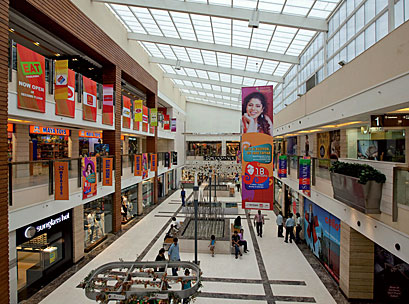I have just returned from a visit to India to look first hand at the rapidly changing retail environment.
It seemed that every day when I opened the latest articles in InsideRetail.Asia there would invariably be an article on retail in India. Whether it be a story on another Western retail brand arriving to open its’ doors or another change in business rules, regulations and policies by the Indian Government or a story about the enormous opportunity that a country with 1 billion people and a growing economy will offer the retail market in the decade(s) to come it seemed retail in Asia has shifted momentum.
There is no doubt that retail change is underway and it is equally obvious that as this change gains momentum the impacts will be enormous. This change in the retail scene presents a huge opportunity for international retailers to enter this market but it does not come without dangers.
The first observation was the enormity of the “retail leap” from the traditional non-organised small retail stall/shop to the sudden emergence of the branded “western style” retail boutique. These are now starting to dot the retail landscape in the larger cities and predictably include KFC, McDonalds and Hard Rock Café in the food segment and names such as Levis, Nike, Adidas, Benetton, Charles and Keith, Esprit, Nine West and Tommy Hilfiger in the field of fashion.
Shopping Malls (after less than a decade of development) are also rising from the ground and whilst there is still some way to go in reaching the lofty standards that exist in other Asian counties such as the developed markets in Hong Kong and Singapore nor the emerging markets in Indonesia, Thailand and the Philippines there is no doubt that India is “hot on the heels” of China to become the largest modern retail market in the world.
It is the prospect of success in a market with in excess of 1 billion people, a changing government attitude toward foreign retail investment and the potential growth in a middle market with disposable income that has international brands/retailers in a mad scramble to get a foothold in this market.
But the frenetic pace of change in the retail market presents dangers that if not recognised or considered will inevitably result in failure for any international retailer who enters the market believing their reputation and international success to be invincible in this new, rapidly developing and “different” environment.
Knowledge of the cultural, family, business, government, social and religious attitudes is paramount to achieving success in India.
Entering a McDonalds store to find the menu does not include a single hamburger – yes that’s right No Big Mac, No Cheeseburger and no Quarter Pounder – is all that is required to understand the enormity of the impact of the aforementioned elements on how a business needs to adapt to achieve success in this retail market!
Another concern requiring caution is that the retail scene appears to be developing faster than the infrastructure required to support it – e.g. poor roads, lack of efficient and accessible public transport and a very unreliable electricity system. New retailers need to choose new sites carefully to avoid being trapped in locations and malls that could be potential “white elephants”. For example, mall developments will have an increasingly detrimental impact on the stand alone strip shop.
To make the entry into this market even more troublesome is the lack of an available skilled workforce. By nature of the quantum leap in retail standards there is a need for millions – yes you read right that is millions – of people trained and ready to deliver the new standards in retail and with the skills to be appointed into the management roles so necessary to protect brand image and to achieve success. I visited the Great India B School campuses in both Lavasa and Hyderabad and was very impressed with these facilities. Great India B School is a formally recognised retail training facility which is dedicated to preparing students for a successful career in retail and retail management.
For an international brand/retailer to enter the India market and achieve success it will need:
- Knowledge of the market and an ability to adapt the retail offer to reflect the market peculiarities.
- To work with a partner(s) who share(s) the same passion and vision of retail success.
- Site selection that has a suitable catchment area and infrastructure to support traffic flow.
- Select the “right retail people” and continue to invest in training and skills development.
For an international brand/retailer that can establish a successful “foothold in the India retail market today the rewards will be greater than can be imagined tomorrow.
InsideRetail.Asia columnist Darrell Wisbey has 30 years retail experience, living and working in Australia and Asia. He is based in the Philippines and a member of Impact Retailing. Email Darrell.






